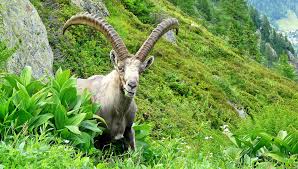On October 17, the first ever Earthshot Prize ceremony took place in London’s Alexandra Palace, which has already been nicknamed the “Environmental Nobel Prize”. One of the nominations is awarded to those who work to protect and restore nature, including various species of animals. You can learn more about the award and its first winners in the documentary series “Earthshot Prize: Repairing Our Planet”, which is published in November on the Discovery Channel, but for now we are talking about several projects to restore extinct species.
Bucardo
The first extinct species that – with great reservations – could be restored in laboratory conditions, was the bucardo, one of the subspecies of the Pyrenean ibex. This animal, which lived in the Pyrenees in Spain and France, was exterminated by hunters at the end of the twentieth century. In 1989, scientists counted about ten bucardos in the wild, and in 2000, the last representative of the species, the female Celia, died.
The genetic material was taken from Celia in 1999 during her lifetime – scientists froze samples of her skin. This made it possible to try to revive the species by cloning using domestic goats. Bucardo’s DNA was placed in goat eggs, from where their own material was previously removed, and then the embryos were implanted into surrogate goat mothers.
The work was carried out by several Spanish research institutes in partnership with the University of Liege (France) with the support of the National Institute for Agricultural and Food Research of Spain. Two series of experiments were carried out. At the first, scientists received 54 embryos and planted them in 13 goats. Two of them became pregnant, but both had early miscarriages (about 45 days). During the second series, 154 embryos were planted in 44 goats, five became pregnant, and one kid was born on July 30, 2003. Perhaps the chance of success was increased by the fact that the surrogate mother was not a purebred domestic goat, but a cross with another subspecies of the Pyrenean goat.
The newborn goat – the cub turned out to be a female – was born by caesarean section and weighed about two and a half kilograms. Unfortunately, she lived for less than ten minutes: she had a serious inoperable lung pathology. Despite this, the scientists themselves evaluated the results of the experiment as positive and intended to improve the technology – however, there has been no more news of success in reviving the bucardo since then.
Passenger pigeon
The date of disappearance of the wandering pigeon is considered September 1, 1914 – on this day, the last dove named Martha died at the Cincinnati Zoo (Ohio, USA). However, this species disappeared in nature and ceased to exist even earlier – the last wild bird was shot in 1900.
Meanwhile, until the 19th century, a huge population of wandering pigeons lived in America – according to various estimates, from three to five billion. The main reason for its extinction is considered to be predatory hunting. Pigeons were indeed killed in flocks for tasty and cheap meat, but this is just one of many factors. Recent research has led to the conclusion that the fact that itinerant pigeons are accustomed to living in huge flocks also played a fatal role. This contributed to the rapid spread of diseases, negative mutations, as well as low adaptability to changing conditions – urbanization, deforestation, etc.
The wandering pigeon became one of the first and main candidates for restoration – work on the revival of the species began in 2012 in the United States as part of the Revive & Restore project. A related species, the striped pigeon (Patagioenas fasciata), is taken as a basis. The recovery program consists of five stages. The first is reserved for decoding and comparing the genomes of these two species. The research is currently at this stage – the DNA code of the pilgrim pigeon has already been sequenced, resulting in approximately 1.1 billion base pairs. However, now the genome is just a chain – individual genes and gene regulators are still unknown, and researchers have yet to identify them.









